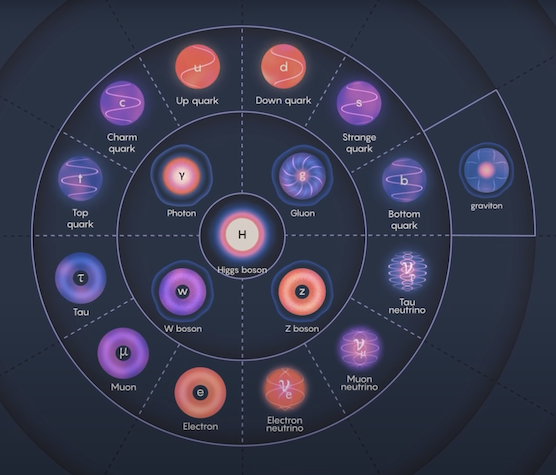David Tong: Lectures on the Standard Model
This is a course on the Standard Model, given to Part III (i.e. masters level) students. It assumes a basic knowledge of quantum field theory and describes the structure of the Standard Model, as well as a number of important, underlying aspects of field theory. Please do email me if you find any typos or mistakes.
Content
- 1. Symmetries: PDF
Introduction. Spacetime symmeries, the Lorentz group and Poincare group and their representations. Spinors, Dirac spinors vs Weyl spinors. Gauge invariance, Maxwell theory, Lie algebras, Yang-Mills theory. Parity, time reversal, charge conjugation, and CPT invariance. - 2. Broken Symmetries:
PDF
Spontaneous symmetry breaking. Discrete symmetries and quantum tunnelling. Continuous symmetries, the Mexican hat potential, the O(N) model, Goldstone bosons and Goldstone's theorem. The Coleman-Mermin-Wagner theorem. The Higgs mechanism. Superconductivity, the London equations, magnetic vortices and confinement of magnetic monopoles. The non-Abelian Higgs mechanism. - 3. The Strong Force:
PDF
Quantum chromodynamics (QCD), asymptotic freedom, anti-screening and paramagnetism, the mass gap, confinement. Chiral symmetry breaking, the quark condensate, pions as Goldstone bosons, the chiral Lagrangian, phases of massless QCD. Hadrons, mesons, baryons, isospin, the eightfold way, lifetimes, heavy quarks. The theta term and the strong CP problem, instantons. - 4. Anomalies:
PDF
The anomaly: the path integral measure is not invariant. Gauge anomalies, the Witten anomaly. Chiral anomalies, or ABJ anomalies, the theta term, neutral pion decay. 't Hooft anomalies. Confinement implies chiral symmetry breaking. - 5. Electroweak Interactions:
PDF
The structure of the Standard Model, anomaly cancellation, Yukawa interactions, three generations, baryon and leption number and B-L, the gauge group of the Standard Model. Electroweak symmetry breaking, unification, fermion masses. Weak decays, electroweak currents, beta decay, 4-Fermi theory. - 6. Flavour:
PDF
The flavour basis and mass eigenbasis. The CKM matrix, Counting parameters, the Cabibbo angle, the Wolfenstein parameterisation, the unitarity triangle. Flavour changing neutral currents, the GIM mechanism. CP violation, the Jarlskog invariant, the strong CP problem, neutral kaon mixing. - 7. Neutrinos:
PDF
Neutrino masses and mass differences, Dirac vs Majorana masses, the dimension 5 operator, neutrinoless double beta decay, neutrino mixing angles and the PMNS matrix, CP violation; neutrino oscillations, oscillations in matter and the MSW effect, neutrino detection experiments.
Problem Sheets
- Problem Sheet 1: PDF The Basics
- Problem Sheet 2: PDF Symmetry Breaking and QCD
- Problem Sheet 3: PDF Anomalies
- Problem Sheet 4: PDF Standard Model
The Standard Model on the Web
- Particle Physics Booklet by the Particle Data Group
- Part III Standard Model by Fernando Quevedo
- Part III Standard Model by Hugh Osborn
- Lectures on Field Theory and the Standard Model by Luis Alvarez-Gaume and Miguel Vazquez-Mozo
- Just a Taste: Lectures on Flavor Physics by Yuval Grossman and Flip Tanedo
- Lectures on CP violation by P. Kooijman and N. Tuning
- TASI Lectures on Neutrino Physics by Andrea de Gouvea

